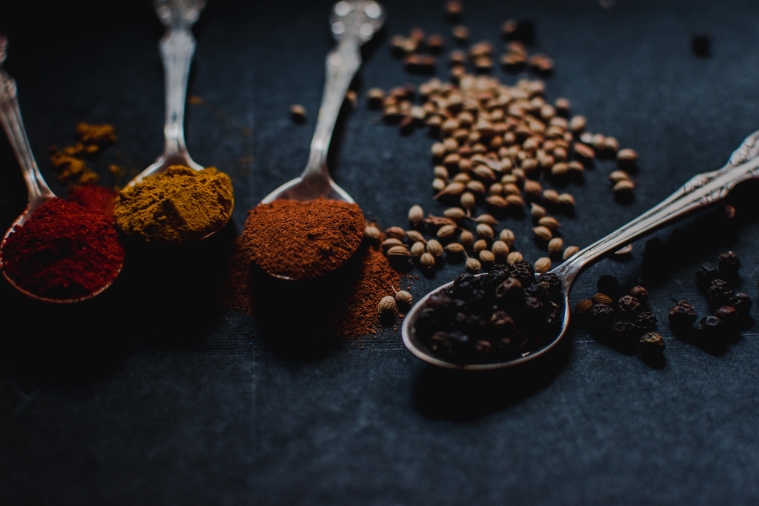Paleo Vedic Foods to Eat

Your diet is one of the cornerstones of good health. You can find numerous diet plans today which promise good health and weight loss. For instance, Ayurveda is an ancient Indian school of healing which promises overall wellness. It specifically prescribes diets as per one’s bodily constitution or dosha – you can find more information here. Another advantage Ayurveda offers is the flexibility of options – you can add or eliminate foods that suit you.
The Paleo diet plan is another such diet inspired by the palaeolithic era (approximately 2.5-10 million years ago). It includes foods which were typically obtained by hunting and gathering, namely meats, seafood, nuts, seeds, fruits and vegetables. It holds that are bodies are unsuited to today’s farming practices. Moreover, the modern diet has been a cause of obesity, diabetes, and cardiovascular diseases.
The Paleo Vedic diet combines the aspects of Ayurveda and Paleo. It can cleanse your body and reset it to its natural rhythm. Take a look at some Paleo Vedic diet foods below.
Meat and Seafood
If you are a non-vegetarian, then opt for grass-fed, organic, and free range meat and poultry. Organ meats such as liver are another popular recommendation. Additionally, go for gut-healing substances like bone broth. This is rich in minerals, amino acids, and gelatine.
If you enjoy fish, go for wild and oily forms such as salmon, sardines, and anchovies. These are rich in omega-3 fatty acids and a variety of minerals such as zinc, calcium, and phosphorus. Try consuming a pound once a week. Alternatively, you could try fish oils such as fermented cod liver oil. These are safe for long-term consumption and are available as capsules or oils.
Eggs are also a protein rich and safe choice among Paleo diet foods. Go for omega-3 enriched eggs. Free-range and pasteurised forms are also advisable.
Fruits and Vegetables
Fruits and vegetables are a key source of fibre, nutrients and phytochemical. They are your best defence against diseases. Hence, go for ten servings of vegetables and five servings of fruit per day. Mix these up with raw, grilled, or fermented forms. The latter is rich in probiotics and healthy acids, but is also pitta-provoking or tamasic (heavy) in nature. Thus, you should consume these in moderation.
Citrus fruits such as lemon are antioxidant-rich. They are also purifying, nourishing, and aid proper digestion. Lemon water is a popular and refreshing beverage that helps with detoxification.
Try to include plenty of nutrient-dense green leafy vegetables in your diet. Additionally, cruciferous vegetables can support a healthy liver and provide cancer protection. Some examples are cauliflower, kale, cabbage and brussels sprouts. Opt for fresh and local ingredients to keep your body in harmony with the environment.
Ginger and beetroot are among the most popular root vegetables. Beetroots are an incredible source of folate and fibre. They also contain manganese, potassium, iron, and vitamin C. Additionally, the leafy tops at the tops of beets (known as beet greens), are rich in betaine or triglyecerine. This detoxifies your liver and supports the methylation process.
Secondly, ginger has medicinal properties which can relieve pain. It is anti-inflammatory, antioxidant rich, and works as a natural immunity booster. Thus, it can treat muscle pain, indigestion, menstrual cramps, and osteoarthritis. It can also restore hair health by the prevention of dandruff, split ends, and hair fall. However, those of the pitta dosha type must be wary of excessive consumption, as it can produce heat.
Potatoes, sweet potatoes and carrots are other root vegetables that can also add variety to your diet. You can also go for fresh corn, green peas and beans if it is local to your season and region.
Healthy Fats
Go for coconut and olive oils, grass fed butter, and ghee. Avocados are a brilliant high fat and nutritious option, if they are local. Coconut oil is a readily available option. It contains medium chain triglycerides (MCT’s) which can help with your gut micro biome, lipid profile, weight loss, and neurological functioning. It also reduces the risk of cardiac illnesses and diseases.
However, the strong coconut flavour may dominate the taste of your meals. You can opt for an expeller-pressed variant of the oil which has a milder flavour.
Foods to Avoid
The Paleo Vedic diet discourages refined grains and sugars, vegetable seed oils, and trans fat. Firstly, avoid white, wheat, and all-purpose flour. These are devoid of the bran and endosperm which are the most nutritious part of the grain. Moreover, the industrial process of refining grains may have added other toxins.
Secondly, stay away from vegetable seed oils such as soybean, corn, canola, or safflower oil. Above all, avoid trans fats which are made by solidifying vegetable oils at room temperature. These promote inflammation and heart diseases.
Thirdly, avoid refined sugars. Look at labels on foods to be wary of disguised sugar forms – such as Sucralose or glucose. This can worsen your metabolism and inflammation levels. It has also demonstrated a positive correlation with obesity, type 2 diabetes, and heart diseases.
Takeaways
The paleo and Ayurvedic diet are typically poles apart. The traditional palaeolithic diet is inspired by foods of the cavemen, namely meat, seafood and eggs, fruits and vegetables, and healthy fats. In contrast, Ayurveda stresses on dals, whole grains, and ghee, with little consumption of meat.
However, both these diets stress on natural and wholesome food. The Paleo Ayurvedic diet is an amazing blend of both Paleo and Ayurveda – it promises you the benefits of both, without having to compromise on your health and interests. Most importantly, you can tweak these guidelines as per your taste and restrictions.
Moreover, this diet is better for some dosha categories than others. For instance, those of the Pitta category can handle meat better due to strong digestion. Additionally, it may also be helpful to avoid grains, dairy and sugar for a while to eliminate allergens and sensitivities. Nevertheless, be sure to follow your Ayurvedic constitution and eat what suits you best.








